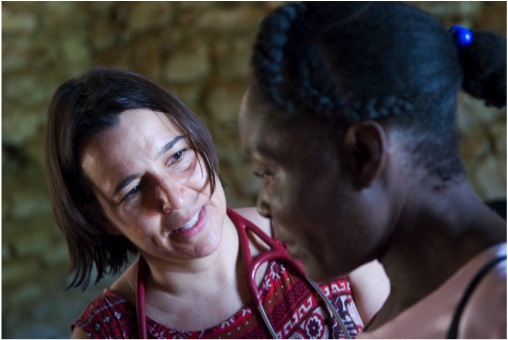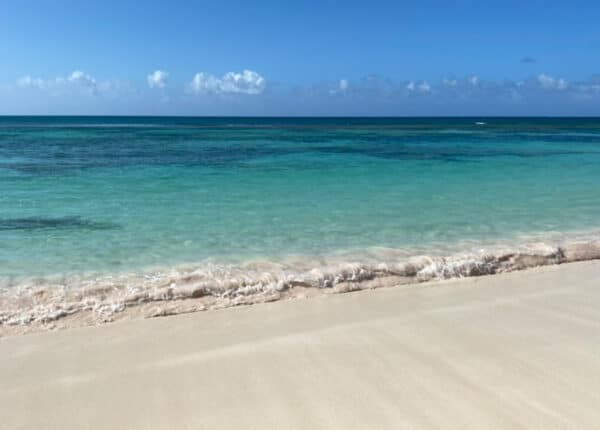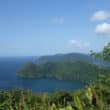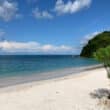Partners in Health’s Joia Mukherjee on Haiti, Cholera and the “Free Man”
By Alexander Britell
Since 2000, Dr Joia Mukherjee has been the medical director at global healthcare nonprofit Partners In Health, which is active in 12 countries around the world. Dr Mukherjee, a Harvard professor who also consults for the WHO on the treatment of HIV and Tuberculosis in developing countries, arrived in Haiti the day after the earthquake and experienced first-hand the staggering devastation that befell the country. Dr Mukherjee talked to Caribbean Journal about her experience following the earthquake, the state of healthcare in Haiti and a cholera problem that could last for decades.
How would you describe the experience of arriving in Haiti the day after the earthquake?
Well I had been working in Haiti for, at that time, 10 years, and had very close friends in Haiti, and it was devastating to see that kind of destruction. When I first arrived there were dead bodies piled up on the streets, and they were being scraped up and taken to mass graves to clear the streets. It was really shocking, and I’ll never forget those sights of dead bodies and the smell of decaying flesh. So it was really, really devastating — for myself and organizationally — the amount of trauma that I went through, that our organization went through, that Haiti went through, was just really beyond what I can explain.
In the foreword to [Partners in Health Co-Founder] Dr Paul Farmer’s new book, Haiti After the Earthquake, you talk about the experience of seeing the “free man” statue across from the rubble of the national palace.
What I think makes Haiti so special to me and to many other people who love Haiti is that it has a very different history than most other countries, particularly post-colonial countries, because Haiti’s history is one of resistance and revolution. And people in Haiti are very proud of that history, and they’re very knowledgeable about that history. The first US president to start an embargo against Haiti was Thomas Jefferson, who, as everyone knows, was a slave owner. So the threat of mentally liberated black people was also something very frightening to the powerful world. And Haiti helped Bolivar, and helped others struggle to liberation in the hemisphere. So I think there is something really powerful about Haiti’s history, and in some ways is summarized by the concept of the Neg Mawon, which means the “free man.” It also means the marooned man, and the runaway slave. In struggling for their liberation, they became increasingly marooned politically, so I think it’s that spirit of resistance that is captured in the statute of the Neg Mawon. I said to a friend of mine, let’s go see the statue. I couldn’t even get my head around the devastation, and we turned and stopped to look at it, and I just wept, thinking of that very petite statute, standing there, defiant, in the face of the devastation. And a Haitian woman put her arm around me and was also teary-eyed, and I said, “look, he’s still standing.” And she said, “the free man will never be defeated.”
Haiti has been struggling to find housing for hundreds of thousands of displaced people. How much is the failure to relocate these groups affecting the public health situation in Haiti?
Well, it’s enormous, in a couple of ways. One, is, certainly, the cholera epidemic, because if you think about it, it started in St Marc, and that was the site for a lot of displaced people. But they were tented refugees, not in camps. The majority of displaced people, or a huge number, were staying with already very poor relatives in very overwhelmed situations with very poor sanitation. I think that’s one of the many reasons we saw the cholera epidemic in that region — that the system of clean water was woefully inadequate already, and then was put under an enormous amount of stress by the number of people.
What is the current state of Haiti’s healthcare system?
The health situation in Haiti was terrible before the earthquake. And a lot of it has been terrible for centuries — there are places that haven’t really had healthcare since independence and even before. Because the slaves never had healthcare, and the plan of the French was to work the slaves until they died. When I started working with Partners, we had a very large charity hospital, and as we became part of the international movement for AIDS/HIV treatment, we were working with the democratically-elected government of Haiti, Aristide’s government. In 2002, the UN created something called the global fund to fight aids, tuberculosis and malaria, the first big money for AIDS treatment.
Our Haitian team, given the work we had done over the years, and the knowledge of the human rights framework, and given our global work, we were very conscious about the decision that we were only going to use that money for HIV in the public sector, and to build up generally the health systems, not just for HIV — that the interest in HIV and the money that had been guarded from this movement was going to go into a much larger battle of trying to build health systems in the public sector to ensure that healthcare could be delivered. But unfortunately, the US government did not support he Aristide government, and put a total embargo on the loans the government issued. There was some positive movement between 2006 and 2010, but very little.
So by the time the earthquake hit, you had a country that had really decimated health services. We were providing care in 10 public health facilities in the country. So we sort of made it our goal to address the earthquake with the same strategy — that we would use earthquake aid to build systems. Not just to provide direct relief — although we did provide direct relief. The idea was that we could work with the public sector, and also organize the community and health resources, around caring about their neighbours. We continued those principles of work, and were able to have a pretty big impact, I think, because we weren’t just focused on relief, we were focused on what we could build that would make Haiti better in the future, what we could provide in terms of increased capacity, increased infrastructure and a deeper, richer range of community health work we could do because of this disaster.
The Clinton Bush Haiti fund recently announced a grant for Zanmi Lasante, your sister organization – what does that grant mean?
It goes for the nursing component and for training. The building of capacity in Haiti is critically important for two reasons — one, it’s a population that has a lot of hospitals, and, moor important now, because of the cholera, because of the number of people who have amputations and mental illness. So we have an enormous need for healthcare in Haiti. The second thing is that we feel we have to prevent the massive flight of health professionals out of Haiti — we have to provide the adequate compensation for them. And this programme is to create jobs in the health sector that will be attractive enough to keep the professional class from leaving – because that is happening in huge amounts. So the idea is that it is important to keep them in Haiti, to meet the need. We think that in this area, St Marc where the grant is going to take place, it serves at least 600,000 people in this hospital, as it was the region most heavily repopulated by people displaced after the earthquake. The district hospital from the north was destroyed. So the need in that area is enormous, and we feel that putting together the training programme will improve the quality of care, build capacity and serve as a way to keep people in Haiti and give them more job satisfaction. One of the reasons people leave is the money, but the other is they want further training.
Has the cholera situation mitigated at all, and do you see it doing so?
No, and we’re very concerned because we don’t see it mitigating, and people have taken their eyes off it. As usual, the international community doesn’t have a lot of patience for the things that are long lasting, and cholera is going to be in Haiti for decades. We feel very strongly that one priority is absolutely developing municipal water and sanitation in Haiti. That has to be a key part of Haiti’s reconstruction. Two, we have to have health facilities that work, so we can treat people. Three, we have to really be paying, training and supervising an army of community helpers that can do an education in the community. And four, very importantly, we feel that the cholera vaccine has to be rolled out in Haiti, if we’re going to prevent tens of thousands of deaths. That last part is, oddly, somewhat controversial, because they don’t know what the strategy would be. In public health, as is often the case, the sense is that it’s too big, too expensive, too hard. We think nothing is harder than seeing an entire community devastated by cholera. Whatever it is that is hard, we can do that, because the alternative is huge, unnecessary death.
What are some of the other major issues in these displaced populations?
In the camps, there are many health issues — one of which is gender-based violence, which has resulted in rape, mental health problems, potentially HIV transmission, unintended pregnancy and other sexually transmitted diseases. Another is tuberculosis. So we expect some of these things you don’t see immediately. Cholera, obviously, you either get sick and die or you live. But there are other things that are creeping into these populations, still 19 months later, in camps, that we will be seeing health consequences in 10 or 20 years. So I think we really need a very strong, motivated, well-trained cadre of health officials.







